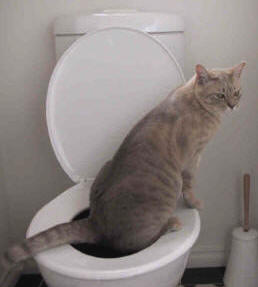Every person has got their private ideas about How to Dispose of Cat Poop and Litter Without Plastic Bags.

Introduction
As cat owners, it's essential to be mindful of how we throw away our feline close friends' waste. While it may appear hassle-free to flush pet cat poop down the toilet, this practice can have detrimental repercussions for both the atmosphere and human wellness.
Alternatives to Flushing
The good news is, there are much safer and a lot more liable means to take care of feline poop. Think about the following choices:
1. Scoop and Dispose in Trash
The most usual technique of taking care of pet cat poop is to scoop it right into a biodegradable bag and toss it in the garbage. Be sure to use a devoted clutter inside story and throw away the waste quickly.
2. Usage Biodegradable Litter
Opt for biodegradable pet cat litter made from materials such as corn or wheat. These litters are eco-friendly and can be safely thrown away in the trash.
3. Bury in the Yard
If you have a backyard, think about burying cat waste in a designated location away from veggie gardens and water resources. Make certain to dig deep adequate to avoid contamination of groundwater.
4. Install a Pet Waste Disposal System
Buy an animal waste disposal system particularly designed for cat waste. These systems utilize enzymes to break down the waste, reducing odor and environmental impact.
Health and wellness Risks
In addition to ecological issues, purging feline waste can also pose wellness threats to humans. Feline feces may consist of Toxoplasma gondii, a parasite that can cause toxoplasmosis-- a potentially severe health problem, especially for pregnant women and individuals with damaged body immune systems.
Environmental Impact
Flushing feline poop presents dangerous virus and bloodsuckers right into the water system, posturing a significant danger to water environments. These contaminants can negatively affect aquatic life and concession water quality.
Conclusion
Accountable family pet ownership extends beyond offering food and shelter-- it also involves proper waste monitoring. By avoiding flushing pet cat poop down the toilet and opting for alternate disposal techniques, we can reduce our ecological impact and safeguard human wellness.
Why Can’t I Flush Cat Poop?
It Spreads a Parasite
Cats are frequently infected with a parasite called toxoplasma gondii. The parasite causes an infection called toxoplasmosis. It is usually harmless to cats. The parasite only uses cat poop as a host for its eggs. Otherwise, the cat’s immune system usually keeps the infection at low enough levels to maintain its own health. But it does not stop the develop of eggs. These eggs are tiny and surprisingly tough. They may survive for a year before they begin to grow. But that’s the problem.
Our wastewater system is not designed to deal with toxoplasmosis eggs. Instead, most eggs will flush from your toilet into sewers and wastewater management plants. After the sewage is treated for many other harmful things in it, it is typically released into local rivers, lakes, or oceans. Here, the toxoplasmosis eggs can find new hosts, including starfish, crabs, otters, and many other wildlife. For many, this is a significant risk to their health. Toxoplasmosis can also end up infecting water sources that are important for agriculture, which means our deer, pigs, and sheep can get infected too.
Is There Risk to Humans?
There can be a risk to human life from flushing cat poop down the toilet. If you do so, the parasites from your cat’s poop can end up in shellfish, game animals, or livestock. If this meat is then served raw or undercooked, the people who eat it can get sick.
In fact, according to the CDC, 40 million people in the United States are infected with toxoplasma gondii. They get it from exposure to infected seafood, or from some kind of cat poop contamination, like drinking from a stream that is contaminated or touching anything that has come into contact with cat poop. That includes just cleaning a cat litter box.
Most people who get infected with these parasites will not develop any symptoms. However, for pregnant women or for those with compromised immune systems, the parasite can cause severe health problems.
How to Handle Cat Poop
The best way to handle cat poop is actually to clean the box more often. The eggs that the parasite sheds will not become active until one to five days after the cat poops. That means that if you clean daily, you’re much less likely to come into direct contact with infectious eggs.
That said, always dispose of cat poop in the garbage and not down the toilet. Wash your hands before and after you clean the litter box, and bring the bag of poop right outside to your garbage bins.
https://trenchlesssolutionsusa.com/why-cant-i-flush-cat-poop/

We hope you enjoyed reading our piece about Don’t flush cat feces down the toilet. Thanks for taking the time to read through our piece of content. Appreciated our content? Please share it. Let another person locate it. Thanks a bunch for your time. Visit again soon.
Top Article